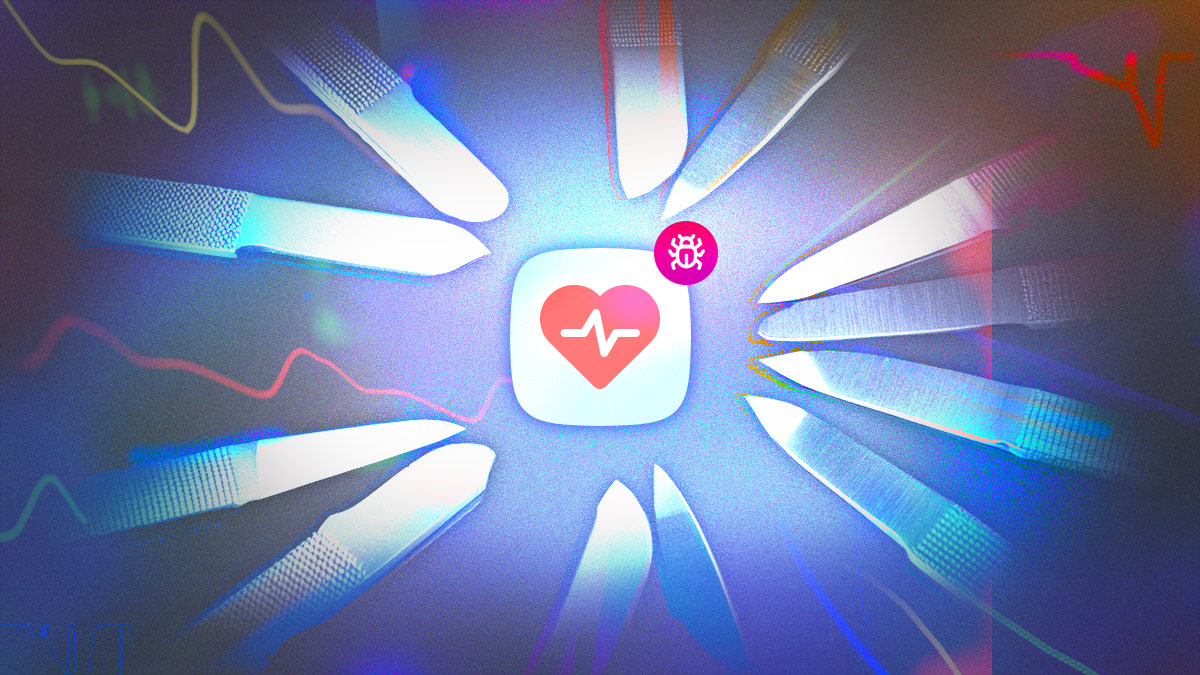Mobile health (mHealth) apps have transformed how patients experience care. With just a phone, people now track glucose levels, share heart rhythms, and message their clinicians. This shift has created new opportunities for convenience and better outcomes — but it has also opened the door to potential mobile attacks.
Unlike backend systems that sit behind hardened data centers, mobile apps run on devices you don’t control. That means attackers can download, decompile, and tamper with them — often in a matter of minutes. The consequences for not securing mHealth applications are magnified. A vulnerability can compromise patient safety, regulatory compliance, and brand trust.
How healthcare apps get broken into
Attackers approach healthcare apps the same way they would any other mobile target, but the stakes are far higher. Their playbook often starts with static analysis — unpacking the app binary (IPA or APK) and reverse-engineering its code with tools like Ghidra, Hopper, or JADX. This process can expose hardcoded API keys, endpoints to electronic health record systems, or debug strings that were never meant to be public. What developers see as harmless leftovers can quickly become a roadmap for deeper attacks.
If attackers don’t get what they need from static analysis, they move on to passive analysis. Here, they run the app in a controlled environment, observing behavior without making any modifications. It’s not uncommon for attackers to uncover sensitive protected health information (PHI) or session tokens sitting in plaintext logs, discover apps communicating over unpinned TLS channels, or find permissions that grant access to far more data than necessary. Even subtle leaks can be enough to open the door wider.
The third stage is dynamic analysis, or tampering with the app while it runs. Using frameworks like Frida or Xposed, attackers can bypass login checks, trick the app into ignoring jailbreak or root detection, or intercept API calls to backend systems. For a consumer app, that might mean unlocking premium features for free. But for a healthcare app, it could mean falsifying a patient’s glucose reading, manipulating a prescription order, or gaining unauthorized access to clinical records.
Why the stakes are higher for mobile healthcare app security
For a retail or gaming app, reverse engineering typically results in stolen IP or lost revenue. In healthcare, the damage is much more profound. A manipulated heart rhythm reading could mislead a doctor into missing a diagnosis. Or, a tampered prescription order could prevent life-saving medication from reaching the patient.
The regulatory landscape reflects these risks. Healthcare apps are expected to comply with multiple overlapping frameworks around the world, from HIPAA and HiTECH in the United States, to GDPR and DPA in Europe and the UK, to PIPEDA in Canada. Each framework comes with its own requirements around consent, encryption, and auditability, but they share a common message: protecting personal health data is not optional.
We’ve already seen what happens when organizations fall short. In 2023, telehealth company Cerebral disclosed that it had embedded tracking pixels from major technology platforms into its mobile app, inadvertently exposing PHI to third parties. The breach affected more than three million patients, sparked regulatory investigations, and left the brand facing lasting reputational damage.
The STRIDE model for mobile healthcare app protection
Because the risks are so varied, the US FDA recommends that healthcare app developers apply the STRIDE threat modeling framework to their security planning. STRIDE breaks threats into six categories, each of which maps directly to healthcare risks. Here are some examples for each category.
- Spoofing: A malicious actor impersonates a clinician or patient to gain access to protected systems.
- Tampering: A device telemetry feed (like glucose levels) is altered, changing the clinical picture.
- Repudiation: An attacker manipulates logs so it looks like a prescription order was never sent.
- Information Disclosure: PHI leaks through insecure storage, exposing millions of patient records.
- Denial of Service (DoS): Telehealth services are locked up by ransomware or DDoS attacks, blocking patient access.
- Elevation of Privilege: Attackers escalate their access to administrator level, gaining control of all patient records.
When viewed through this lens, the attack surface of a healthcare app becomes clearer, along with the need for multi-layered defenses.
Protection for mHealth apps
No single measure can make a healthcare app impenetrable, but defense-in-depth can make attacks costly, unreliable, and easier to detect.
- Code hardening and code obfuscation are the first line of defense. By encrypting strings, stripping symbols, obfuscating code paths, and other code hardening techniques, development teams can frustrate attackers using static analysis and make it far harder to extract secrets or reconstruct logic.
- Runtime Application Self-Protection (RASP) adds another layer. These defenses monitor for suspicious behavior at runtime, detecting jailbreaks, rooting, hooking frameworks, and emulator use. When tampering is detected, these tools can automatically shut down the session, degrade functionality, or alert the development team. For healthcare apps, this kind of runtime awareness is crucial to preserving the integrity of patient data.
- App attestation is becoming increasingly important in healthcare. As medical devices and apps exchange data in more complex ways, attestation provides cryptographic proof that the app and device have not been tampered with. This helps protect the integrity of sensitive data, ensuring clinicians and patients can trust what they see on screen.
- Mobile Application Security Testing (MAST) can catch vulnerabilities during development. These testing tools are cost-effective and the development team can run them easily and frequently to detect security issues and remediate them as quickly as possible. In order to achieve a well-secured mobile app, organizations must incorporate both automated testing and multi-layered mobile app protection.
- Real-time threat monitoring ensures that protection doesn’t stop at launch. It provides visibility into tampering attempts once the app is in use. The FDA requires post-market surveillance for medical devices, and threat monitoring plays a key role in meeting that obligation.
Guaranteeing security for mobile healthcare apps
Mobile health apps are increasingly becoming critical components of patient care. That makes them prime targets for attackers.
- Static, passive, and dynamic analysis techniques are readily available to threat actors.
- A single vulnerability can compromise not just data, but patient safety.
- Defense-in-depth (combining code hardening, runtime protection, monitoring, and app attestation) is essential.
- Meeting FDA, EU-MDR and other global regulatory agencies’ cybersecurity expectations requires embedding these mobile app security protections across the development lifecycle.
Here’s the bottom line: If your app connects to patient data or devices, it’s already in an attacker’s sights. The time to secure it is now.
To learn more about protecting your mHealth app, speak with our mobile app security experts today.






